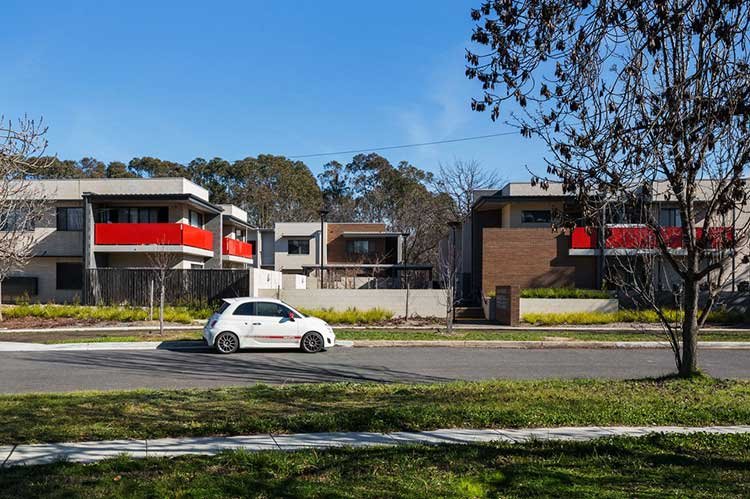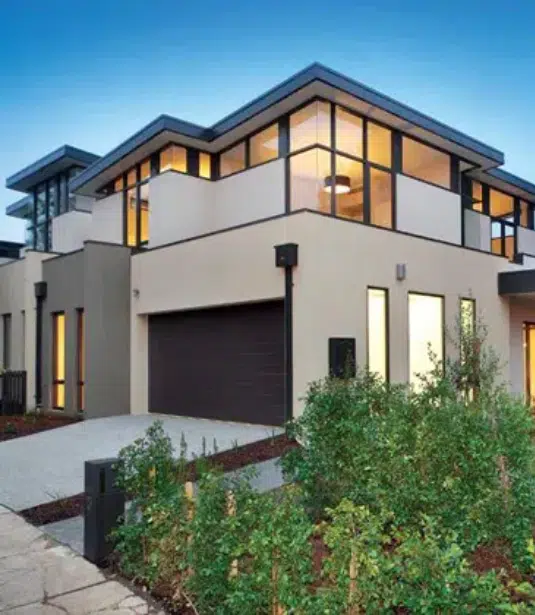Residential House Architect: Creating Unique Homes with Attention to Detail
Residential House Architect: Creating Unique Homes with Attention to Detail
Blog Article
Top Fads in Residential Architecture You Need To Find Out About
As residential architecture remains to develop, a number of engaging patterns are shaping the method we develop and occupy our space. Secret advancements such as lasting building techniques, the integration of smart home innovation, and the surge of modular homes highlight a significant shift in the direction of both functionality and ecological obligation. Furthermore, principles like open strategy living and biophilic design are redefining our communication with space and nature. Understanding these fads not only informs design options yet also discloses more comprehensive ramifications for way of living and neighborhood - residential house architect. What might these technologies indicate for the future of household living?
Sustainable Building Practices
An increasing variety of residential jobs are welcoming lasting structure practices, driven by a growing understanding of ecological effect and energy efficiency. This shift is identified by the integration of environment-friendly materials, energy-efficient layouts, and ingenious building and construction techniques. Property owners and home builders are significantly prioritizing making use of eco-friendly resources, such as bamboo and recycled steels, which not just decrease the carbon impact however likewise boost the sturdiness and aesthetic appeal of residential or commercial properties.
Integrating energy-efficient systems is an additional critical facet of lasting structure - residential house architect. Features such as high-performance insulation, energy-efficient windows, and solar panels are becoming requirement in new residential layouts. These components not only contribute to reduced power consumption but also supply considerable long-lasting cost savings for property owners
Furthermore, the format of lasting homes typically emphasizes natural light and ventilation, reducing the dependence on fabricated lighting and climate control systems. Landscaping practices, such as xeriscaping, further promote sustainability by minimizing water use.
As the need for lasting living solutions continues to rise, the household architecture industry is poised to adjust and introduce, making certain that future homes are not only environmentally responsible yet practical and additionally comfy for their passengers. - residential house architect
Smart Home Technology
Smart home modern technology is revolutionizing the way homeowners interact with their space, enhancing protection, convenience, and energy administration. This innovative technique integrates different devices and systems, permitting individuals to control their homes from another location or via automated procedures. Central to this fad is using smart devices such as thermostats, lights, safety and security cams, and devices, all connected using the Internet of Things (IoT)
Among one of the most enticing functions of smart home modern technology is the capability to tailor settings for optimum energy performance. House owners can keep track of power usage and readjust heating, cooling, and lighting based upon their regimens, considerably decreasing utility prices. Innovative security systems geared up with smart locks and monitoring video cameras provide tranquility of mind, enabling remote monitoring and informs to prospective safety violations.
Combination with voice-activated aides improves individual experience, enabling property owners to manage devices with easy voice commands. As innovation remains to develop, the possibility for clever home systems to improve quality of life expands, making them an important consideration in modern-day residential design. Ultimately, smart home technology is not simply a pattern yet a fundamental shift toward more intelligent living settings.
Open Idea Living
Open principle living has arised as a specifying feature in modern household architecture, defined by the removal of traditional obstacles between spaces. This style viewpoint advertises fluidity and connectivity within the home, enabling a smooth transition between areas such as the kitchen area, dining, and living areas. By eliminating wall surfaces and partitions, open idea formats produce a feeling of space, promoting a welcoming atmosphere that boosts social interaction.

Furthermore, this strategy to domestic style aligns with minimalism, concentrating on functional simpleness and aesthetic coherence. Homeowners appreciate the adaptability of these designs, which can be easily adapted to show individual design with furnishings setup and design. As open principle living remains to obtain grip, it remains a testament to advancing family characteristics and the need for homes that boost link and comfort.
Biophilic Layout
Biophilic layout has come to be increasingly significant in household architecture, highlighting the inherent connection between humans and nature. This layout viewpoint seeks to incorporate natural environments right into living rooms, therefore fostering a feeling of health and boosting the lifestyle for residents. By including functions such as natural light, plants, and natural products, biophilic layout promotes a harmonious relationship in between interior atmospheres and the all-natural globe.
Key elements of biophilic design consist of large home windows that give unblocked sights of exterior landscapes, living walls that present plant into interiors, and open flooring strategies that encourage air movement and all-natural light infiltration. Water attributes, both inside and outside the home, offer to create relaxing ambiences and boost sensory experiences.
In addition, the pop over to these guys use of lasting products not only supports ecological stewardship but likewise adds to healthier interior air top quality. As recognition of environmental concerns increases, property owners are progressively focusing on layouts that mirror their connection to nature. In essence, biophilic layout not just raises aesthetic allure however also addresses emotional and mental requirements, making it an essential fad in modern residential architecture.
Modular and Prefab Residences

Additionally, modular and prefab homes are designed with sustainability in mind. Lots of manufacturers utilize energy-efficient systems and eco-friendly products, such as solar panels and advanced insulation methods, contributing to minimized energy intake and reduced utility bills for house owners. The versatility of design options permits personalization, satisfying varied aesthetic preferences and practical needs.
As the need for affordable real estate remains to climb, modular and prefab homes offer a practical remedy, attending to both economic and environmental obstacles. Communities are increasingly recognizing the potential of these structures, incorporating them right into metropolitan and rural setups. In general, the trend towards prefab and modular homes symbolizes a shift toward more lasting, reliable, and versatile living atmospheres, making them an essential facet of modern household style.
Conclusion
In conclusion, the evolving landscape of residential style showcases significant trends that focus on innovation, wellness, and sustainability. Lasting building methods and smart home innovations boost important source effectiveness and ease, while open concept living and biophilic design foster social interaction and a link to nature. Furthermore, the increase of modular and prefab homes provides customizable and economical remedies, mirroring a broader shift in the direction of practical and responsible living. These trends jointly highlight a dedication to developing cutting-edge and unified residential settings.
Secret developments such as lasting structure techniques, the combination of wise home modern technology, and the rise of modular homes highlight a substantial change towards both capability and ecological responsibility.The rise of prefab and modular homes has transformed the household style landscape, using ingenious services for effective and lasting living.Moreover, prefab and modular homes are created with sustainability in mind. Overall, the pattern towards modular and prefab homes signifies a shift toward more lasting, efficient, and versatile living environments, making them a pivotal element of modern property style.
Sustainable structure methods and smart home technologies improve effectiveness and comfort, while open principle living and biophilic design foster social communication and a connection to nature.
Report this page